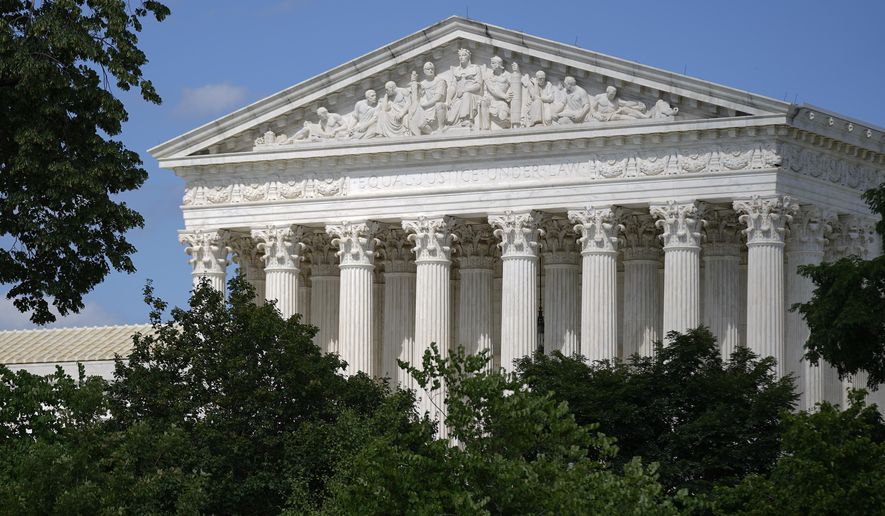OPINION:
Editor’s note: This is one in a series examining the Constitution and Federalist Papers in today’s America.
Click HERE to read the series.
“All executive power shall be vested in the President of the United States of America.”
With those 15 simple and unambiguous words, the framers of the Constitution — and those state legislatures that ratified them — made clear that they believed in and had created a unitary executive.
To James Madison, the advantages of a unitary executive were obvious. In Federalist No. 51, he wrote that an undivided executive would strengthen its ability to resist encroachments by the legislature: “As the weight of the legislative authority requires that it should be thus divided [into branches], the weakness of the executive may require, on the other hand, that it should be fortified.” In other words, a true separation of powers among the branches requires roughly co-equal branches.
Unfortunately, one of the “reforms” promoted by the Progressive Movement in the late 19th and early 20th centuries was an attempt to redirect and attenuate the unitary nature of the president. This ultimately led to the creation of independent agencies — “independent” precisely because they stand outside the constitutional framework specified in Article II.
These independent agencies are not accountable to the president — he or she only nominates their leaders. In most instances, they cannot be removed except for cause, which as a practical matter means engaging in criminal behavior. This compares to the Cabinet and other officials who serve at the pleasure of the president.
Independent agency officials are also not substantially accountable to the legislature. Congress only confirms its leaders and, in some instances, appropriates funding.
Nevertheless, Congress, in a multigenerational effort to erode the power of the presidency, has planted numerous such agencies throughout the government. The Nuclear Regulatory Commission, the Commodities Futures Trading Commission, the Securities and Exchange Commission, the Consumer Financial Protection Bureau, the Federal Trade Commission, the Tennessee Valley Authority, Freddie Mac, Fannie Mae and other such agencies wield enormous power — in many instances quasi-judicial and in almost all instances accountable to no one — over American citizens.
Two years ago, in a case about whether and by whom the director of the Consumer Financial Protection Bureau could be removed, the Supreme Court reasserted the idea of a unitary executive. Chief Justice John G. Roberts Jr. emphasized: “Under our Constitution, the “executive power — all of it — is vested in a president,” and because the CFPB director “wields significant executive power,” the statutory provision that precluded his removal by the president is unconstitutional.
Justice Clarence Thomas took the argument to its logical conclusion and concluded that the Constitution grants only specific and separated legislative, executive and judicial powers. Consequently, independent agencies stand squarely outside the Constitution. Given that Woodrow Wilson, who was one of the principal architects of the administrative state, argued explicitly for independent agencies as a way to avoid the constraints of the Constitution and the separation of powers, that conclusion seems reasonable.
The question of independent agencies is not academic. It is current and pressing.
For instance, in February, the Federal Energy Regulatory Commission — which regulates wholesale electricity rates and the construction of pipelines (among other things) issued two new draft policy statements that would have the practical effect of banning the construction of new natural gas pipelines in the U.S. These documents would expressly impose a basis for procedural and litigatory delays in permitting pipelines.
In early March, FERC Chair Richard Glick testified before the Senate Energy and Natural Resources Committee. During the hearing, Sen. Bill Cassidy, Louisiana Republican, asked: “Has anyone higher up in the administration ever spoken to you in regards to somehow slow-walking or otherwise impeding or otherwise accentuating policy that would have the effect of impeding the development of natural gas pipelines?” Mr. Glick answered: “Absolutely not.”
Unfortunately, a series of requests to FERC under the Freedom of Information Act made by the Institute for Energy Research, indicate that Mr. Glick had met with a senior administration official — the deputy national climate adviser, Ali Zaidi — every other week for months before the new policies were announced.
The Wall Street Journal wrote an editorial about the meeting and the fact that the Institute for Energy Research is still waiting for responses to most of its other requests — focused primarily on communications between the Executive Office of the President and FERC about the new policies.
Mr. Glick, of course, attacked the editorial. It is important to note, however, that he did not offer to produce the remaining requested items. It is possible that Mr. Glick and Mr. Zaidi did not talk about the policies in question. Or maybe they did.
Either way, the foundational problem — as it is for all independent agencies — is a lack of accountability. If FERC were an obvious part of the executive branch under Article II, the chair would be directly accountable to the president and there would be no problem with him discussing anything at all with Mr. Zaidi, another presidential appointee.
But the extra-constitutional nature of FERC means that we are supposed to act as if Mr. Glick runs an independent — in this case a quasi-judicial — agency outside of the involvement of the Executive Office of the President. That is, of course, nonsense, as the twice-weekly meetings with senior administration officials make clear.
• Thomas Pyle is the president of the American Energy Alliance and the host of “The Unregulated” podcast.





Please read our comment policy before commenting.